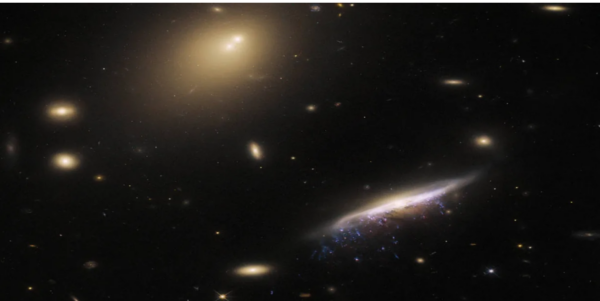NASA’s Hubble Space Telescope is once again exercising its powerful optics. A billion-dollar observatory has captured an image of a galaxy like a jellyfish. If you look closely, you may see an oddly gorgeous nebula in the lower right corner of the photograph.
It is called to as “JW100” and the “Jellyfish Galaxy” because the streams of star-forming gas emanating from the galaxy’s disc resemble tentacles.

Ram Pressure
- The process of ‘Ram pressure stripping’ produces streams of star-forming gas that drop off the galaxy’s disc like fresh paint.
- Ram pressure stripping occurs when galaxies come into contact with the diffuse gas that penetrates galaxy clusters.
- The development of individual stars can also be affected by ram pressure.
- As galaxies move through this unstable gas, it acts as a headwind, expelling gas and dust from the galaxy and generating the drifting streamers that obviously blanket JW100.
IC5338
- Two brilliant spots are seen at the top of this image, which is surrounded by a startlingly bright zone of diffuse light. This is the center of the cluster’s brightest galaxy, IC 5338.
- IC 5338 is a cD galaxy, which is a kind of elliptical galaxy with an extended halo. These galaxies presumably consume smaller galaxies in order to grow.
NASA’s Hubble Space Telescope reveals that Jupiter’s iconic “Great Red Spot” is diminishing.
This beautiful image was captured by Hubble’s Wide Field Camera 3, which might contribute to the study of stellar evolution.

